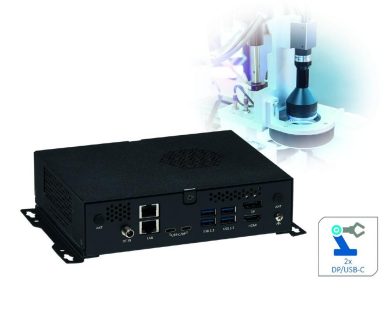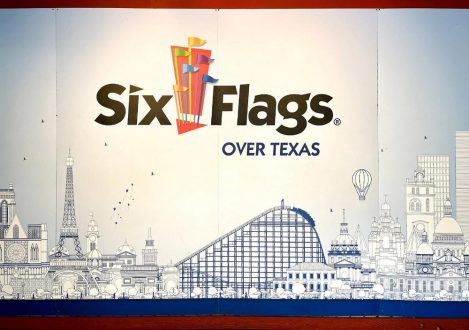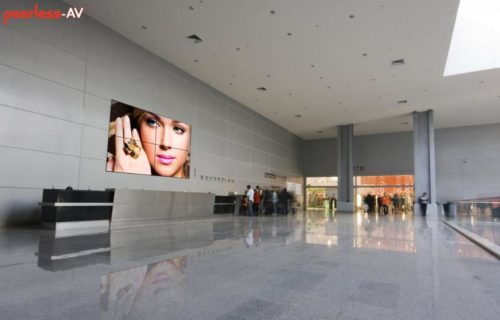Quantum technology: Just hype, or is it the future?
In October 2023, Claus Heitmann (CEO), Michael Kneier (VP Sales & Marketing) and Dr Björn Globisch (Head of Research & Development) spent six exciting days on the "Quantum Berlin goes USA" delegation trip to Washington, organized by Berlin Partner for Business and Technology and accompanied by State Secretary, Michael Biel (Senate Department for Economics, Energy and Public Enterprises), which focused exclusively on quantum technology. As a management team, all three have gained a great deal of impressions in various areas of quantum technology during this trip and are faced with both application-specific challenges on the customer side and development-specific issues, as TOPTICA EAGLEYARD has been developing laser modules for innovative applications for many years and is now successfully entering the QT segment. Under the motto "THINKING BEYOND", the company works in partnership with innovation leaders to jointly realize visions in the QT field with highly integrated laser diodes and expert know-how.
In the interview, Claus Heitmann, Michael Kneier and Dr. Björn Globisch sum up their travel experiences and combine them with their personal experiences to get to the bottom of the question of how much tangible evidence there is behind the QT trend, and what the future of QT might look like.
Which visit did you find most surprising during the delegation trip? What impressed you the most?
"We had an extremely exciting delegation trip organized by Berlin Partner for Business and Technology, during which we visited NASA, IonQ, the Quantum World Congress, the Quantum Catalyzer, NIST (National Institute for Standards and Technology) and the German Embassy in Washington D.C. – there really were a lot of highlights and new impressions. The discussions with the managing director of the Representative of German Industry and Trade Dr. Christoph Schemionek and the Head of the DLR (German Aerospace Center) Office Washington Marc Jochemich are particularly memorable for me."
What I found most surprising was my visit to the Quantum World Congress (QWC). There were a lot of overview presentations and only a few technical presentations. In my view, the QWC’s target group was primarily a political audience. That did surprise me a little. I would actually have expected more of a technical focus. What impressed me most was the visit to IonQ and, in particular, the maturity of the trapped-ion quantum computers. IonQ has a very elaborate product and business strategy, although the applications are not yet clear."
"That was actually what I found most surprising at the congress in connection with the visit to IonQ. You have a very tight timetable and are working on your technology roadmap under great pressure and, at the same time, are still looking for use cases and have approached the technology community very openly. I am curious to see what success stories will develop from this "business-science clash" over the next few years. I also found it very impressive how many acquainted customers we are represented with under the heading of quantum technology. This was a welcome confirmation of how well we are already positioned in this market. Some customer visits, such as to NASA or NIST, which were organized as part of the delegation trip, felt a bit like ‚coming home‘."
Has the trip changed how you think about the QT market and its future?
"Yes. For me, QT is a very oversized umbrella term that is still relatively "sticky". The desired and comprehensible granularity behind the term QT is still missing. However, I can see the enormous potential and the need to integrate into this QT market. We have this opportunity with our products and this was clearly demonstrated by the IonQ visit, for example – people are already talking about miniaturization and scaling and this fits in perfectly with the strategic direction of TOPTICA EAGLEYARD."
What is your favorite QT application and why?
"My favorite QT applications are applications where I can also see or recognize a ‚world improvement effect‘, e.g. in the medical field – in other words, an application with real tangible added value. So yes, it could be a quantum computer, but it’s less tangible for me. QT applications and applications in the field of QT sensing are the highlight for me – very valuable treatments on patients are made possible by QT sensing, which motivates me."
"My favorite applications are those where our products are closest to the market or closest to the application: in the field of sensor technology, for example, these are particle sensors, exoskeleton control, magnetometers, where we are already the furthest along with our customers."
Which QT applications do you think will be first on the market?
"I think the first application that already exists in principle today is QKD, i.e. quantum key distribution. It will be the first to make it, simply because there is a state security aspect behind it. In my view, this will be the first application to go to market, although the market is small."
"But of all the QT applications, this huge range of applications, sensing is simply the furthest along in my view."
"Sensing is the most visible area for us, because this is where laser diodes can make the most of their advantages: small form factor, efficiency, precision."
What is the biggest challenge in the QT market at the moment?
"This is currently mainly on our customer side. I heard this very clearly in the corridors at the Quantum World Congress. Many players are still looking for the real "major app" in some places. Who really benefits from this to such an extent that business cases can be derived from it? And we at EAGLEYARD are already pretty well prepared for this with our roadmap for the scalability of energy-efficient laser diode components."
"I believe that the term quantum technology has created very high expectations, and we now have to show that we can fulfill them – at least in part. IonQ has also confirmed this with its strategy. It can (and must) now be shown that quantum computers can be built and that interested users can also use them. All QT companies that are close to the application must now work towards demonstrating a user benefit."
"One major challenge, for example, is that the US government appears to have a clear expectation, particularly from the American QT community, that a clear application and benefit of quantum technology must be found within the next five years if funding on the current scale is to be provided in the longer term. I’m not sure if everyone has internalized this yet. It’s a playing field where you have to show what it’s good for in a commercially convincing way within a given time frame."
"It’s a bit like a race. This race is the challenge. Who is positioning themselves in this major QT event and who really has applications at the end and can also show that it is not just a research development, but that it really can be reproduced and manufactured. That’s extremely important so that it doesn’t end up becoming an umbrella term for something that everyone will remember as funny in ten years‘ time."
Let us take a little trip on a journey through time. Imagine it’s the year 2033, what does the QT world look like then? And what about in 2043?
"In ten years‘ time, we will see QT applications in some fields, I think so. Not in the breadth or to the extent that it is currently being hyped. But there will be segments where QT has its uses. I particularly believe in the field of sensor technology – QT can bring significant advantages for a wide range of measurement tasks and accuracies. We have just received confirmation during a customer visit to Harvard that our miniECLs and miniTAs will "dominate the Rydberg community" over the next five years."
"In ten years‘ time, we will be anchored in the market with even more innovative products and greater scalability, especially in the field of QT sensing. It’s difficult to predict in 20 years‘ time, but I can see that development cycles are getting shorter, and that genuine innovations are always a particular challenge.
"I believe that we are going through the normal hype cycle with QT, as with all other technologies. We are currently experiencing an exponential rise, and I believe this will continue for another 3 to 5 years. This will certainly be followed by a noticeable cooling down. On the one hand, because state subsidies will decrease significantly and, on the other, because private investors will also invest much more conservatively in the technology. At this point, the applications that really have market potential will crystallize. The first real QT applications will certainly be available in 2033. In computing, it will be quantum computers that have a real advantage over classical computers for individual, relevant problems in practice, although quantum computers will continue to be large and expensive. In 20 years, the "valley of tears" should be overcome, i.e. individual initial applications with higher quantities will be addressed, the technology will be further developed for these applications and miniaturized in such a way that the entry hurdle for new applications is low. And so, in 20 years, we should actually have a quantum business.”
"You always think that there are parallels to the eras of Data and Telecommunications. That were also 20/30 years. Look at where we were 30 years ago in the Data and Telecoms world and everyone jumped on the bandwagon. Is the QT world also just a bandwagon that everyone jumps on and then you somehow realize in ten or 20 years that everything turned out differently than we thought? I hope not."
Which QT applications do you think will have the greatest impact on people’s everyday lives?
"At the moment, the control of exoskeletons is also supported by human-brain interface applications. So I can imagine a lot of potential in the field of prosthetics. If things continue to develop as they are at the moment, I expect this to be of great benefit to people’s everyday lives."
"I see the area of sensor technology in the same way. I see the greatest tangible benefit for me in the medical sector. So if you think about hospital beds, where epileptic seizures, for example, can be diagnosed more quickly."
"Stroke prevention, for example, as a "consumer good" on every ambulance for diagnostics."
"And we are working with many customers and start-up ideas that are already living these innovative approaches today."
"Yes, I think it’s more for applications in the medical field. Everything else doesn’t have that much influence on our day-to-day lives."
Please complete the sentence EAGLEYARD and QT, it’s like..
"Bread and butter."
"Pot and lid." It fits well. It simply fits well into the QT roadmap that we have the opportunity to miniaturize things.
"The hammer for the nail."
What is TOPTICA EAGLEYARD working on in the QT area, and what are the current challenges?
"In principle, a laser with a small linewidth and high output power that is as miniaturized as possible is important for almost every QT application. And that is exactly what we are working on at EAGLEYARD. We also specifically select the attractive QT wavelengths and then develop lasers with a small linewidth and high output power, such as the miniECL in combination with a miniTA or a DFB laser with miniTA or, thinking a little further into the future: PIC lasers, which promise even smaller linewidths and can possibly even be combined with a TA, which then provides the necessary output power."
"And all of this is based on an industrial platform for laser diode components that is scalable."
What is your biggest QT challenge personally in your role at EAGLEYARD?
"Developing the right roadmaps today that take into account and reflect this great decade in the best possible way. Focused on products that appeal to a wide range of applications. And to find talented people who are able to develop and build such products not from a research perspective, but with an industrial approach, so that they can be reproduced and implemented in large quantities."
In our dynamic business environment, it is challenging in terms of sales to simultaneously serve an outstandingly innovative segment with QT in line with the market, in order to help shape the resulting opportunities in the long term. The challenge for our customers is to distinguish the successful start-ups from the others at an early stage.
For me, it’s about finding the right partners who can support precisely this approach that Claus has just mentioned. So we can’t do everything ourselves in technology. We are dependent on partners who do electronics development and passive chip development. You have to find those who really think in terms of industry and don’t just want to take the research money with them, in order to stay alive. On our side, the challenge is to develop the right platforms with which we are positioned modularly, in order to be able to cover the entire scope of diversity offered by quantum technology as efficiently as possible, so that we don’t have to develop something new for every application."
TOPTICA EAGLEYARD is based in Berlin and is a leading supplier of high-power laser diodes in the wavelength range from 630 nm to 1120 nm. The products used around the globe combine maximum performance, maximum service life and excellent beam quality, making them particularly suitable for industrial, medical, scientific and aerospace applications. Founded in 2002 as a spin-off from the renowned Ferdinand-Braun-Institut (FBH), TOPTICA EAGLEYARD now plays a leading role with its GaAs-based laser diode portfolio. With its expertise, experience and know-how, market-ready products are developed from research results and sold worldwide either directly or via partners. TOPTICA EAGLEYARD has been part of the TOPTICA Group since 2013. Further information can be found at https://www.toptica-eagleyard.com.
eagleyard Photonics GmbH
Rudower Chaussee 29
12489 Berlin
Telefon: +49 (30) 63924520
Telefax: +49 (30) 63924529
http://www.toptica-eagleyard.com
Marketing
Telefon: +49 (30) 6392-4561
E-Mail: stephanie.hannibal@toptica-eagleyard.com
![]()





